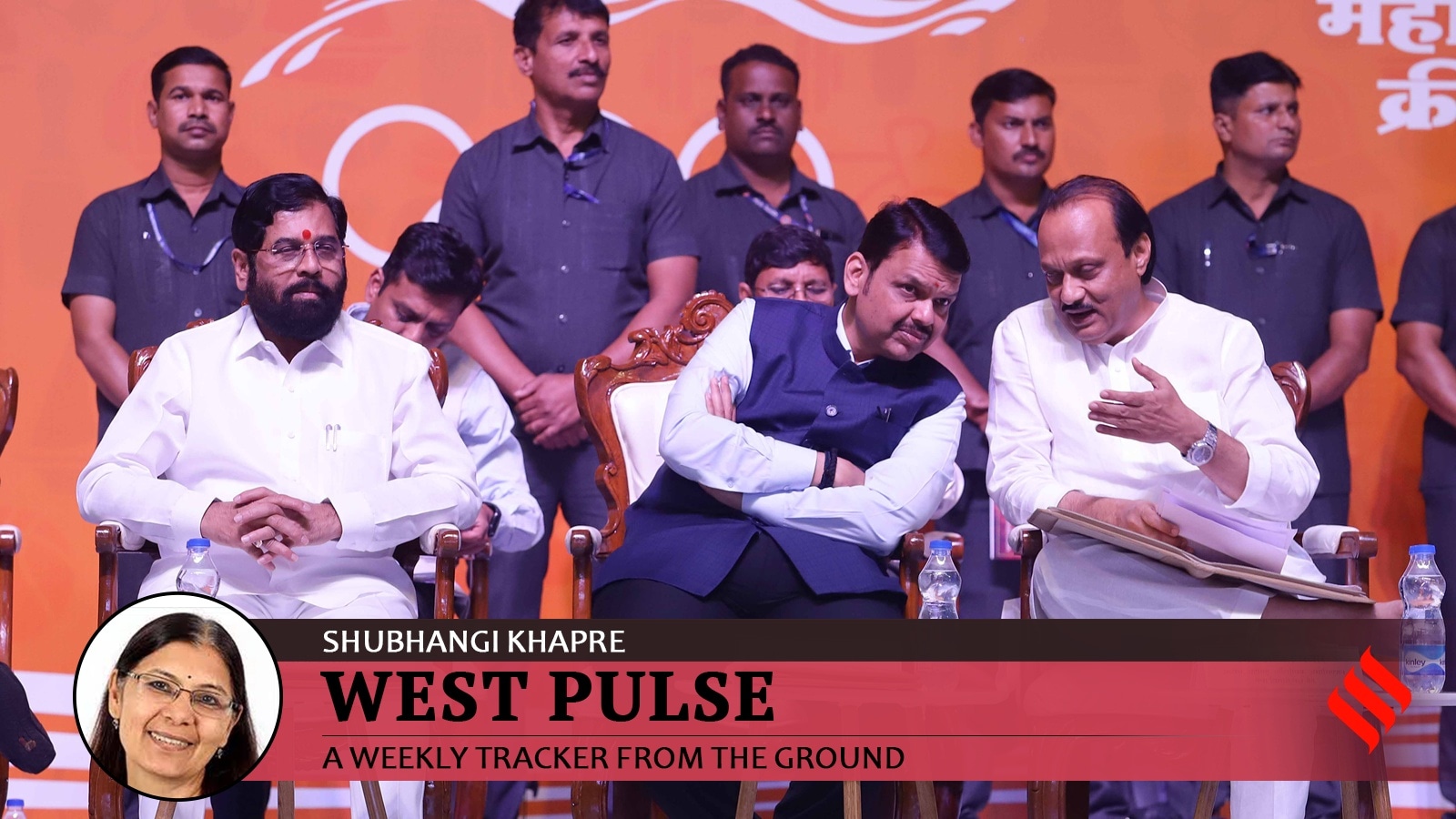Political tensions have once again surfaced in Maharashtra’s ruling Mahayuti alliance, with the latest dispute centered around the funding of the Mukhya Mantri Majhi Ladki Bahin Yojana. The scheme, launched by the Shiv Sena-led government, has become a flashpoint, particularly due to a diversion of funds meant for Scheduled Castes (SCs) and Scheduled Tribes (STs) to support the scheme’s ambitious promises. This controversy has ignited long-standing grievances among Shiv Sena leaders about how Finance Minister and Deputy Chief Minister, Ajit Pawar, runs the state’s finances.

The Dispute: A Clash of Interests and Priorities
The issue came to light when Social Justice Minister and Shiv Sena leader, Sanjay Shirsat, criticized the Finance Department for diverting approximately Rs 400 crore from funds allocated for SC and ST welfare to finance the Ladki Bahin Yojana. Shirsat’s frustration was clear: “I was not even informed about this. If the Social Justice Department is no longer needed, it should be shut down,” he said, revealing his displeasure over the unilateral decision. This public outburst is the latest in a series of complaints from Shiv Sena members about how Pawar’s management of the finance portfolio has sidelined their interests.

Historical Grievances and Tensions
Shiv Sena’s discomfort with Ajit Pawar’s handling of finances dates back to the previous Maha Vikas Aghadi (MVA) government. Even then, several Sena leaders voiced concerns over what they perceived as an imbalance in fund distribution, with Pawar allegedly favoring his own party’s legislators. This issue was one of the key reasons for the Sena’s split in 2022, with rebel MLAs citing the poor handling of financial matters as a major factor in their decision to join the rival faction.
Though Pawar is once again part of the Mahayuti coalition, the unresolved grievances have resurfaced. The controversy intensified when the state’s annual budget, presented by Pawar in March 2025, allocated significantly lower funds for departments controlled by the Shiv Sena, such as Urban Development, Public Health, and Education, in comparison to others. These concerns were dismissed by Pawar as baseless, but the friction remains palpable.
Finance Minister’s Defence and the Bigger Picture
Ajit Pawar, a seasoned politician and finance minister, defended his decision to divert the funds, stating that it was a well-considered move necessary for maintaining the state’s financial health. According to a senior official from the state’s finance department, Pawar is known for making tough financial decisions, balancing political considerations with fiscal discipline. The official stressed that the allocation of funds was not arbitrary but aimed at meeting the challenges posed by Maharashtra’s ballooning debt.
The Financial Strain: Balancing Welfare Schemes and Debt
While the Mahayuti coalition enjoys a commanding position in the Maharashtra Assembly, the state’s economic situation has become increasingly precarious. The implementation of populist schemes like the Ladki Bahin Yojana, along with promises such as free power for farmers, has exacerbated the state’s financial strain. Maharashtra’s debt stock is expected to rise to Rs 9.32 lakh crore by 2025-26, constituting 18.87% of the Gross State Domestic Product (GSDP), a significant increase.
Despite the challenges, Pawar has made it clear that maintaining financial discipline while fulfilling electoral promises remains a priority. However, questions about the sustainability of the Ladki Bahin Yojana, which was heavily promoted during election campaigns to secure women’s votes, continue to linger. The scheme faced criticism early on due to delays in promised increases in financial assistance and issues with beneficiary eligibility.
Political Fallout: How the Row is Impacting the Alliance
Within the Mahayuti alliance, the tension between the Shiv Sena and NCP is further complicated by the involvement of other stakeholders, such as the BJP, which is seen as the “big brother” of the coalition. Some Shiv Sena leaders have expressed frustration at what they perceive as being sidelined by the BJP, which they feel is not paying enough attention to internal party grievances.
In response to the outcry, BJP leaders, including state president Chandrashekhar Bawankule, attempted to downplay the differences, suggesting that the issues would be resolved through dialogue. However, the ongoing political rift indicates that the road ahead for the Mahayuti government may be fraught with internal conflicts that could affect governance and policy implementation.
Conclusion: A Deeper Look into Maharashtra’s Governance Challenges
The Ladki Bahin Yojana dispute is a microcosm of the broader governance issues facing Maharashtra. While the scheme’s intentions—empowering women—remain popular, its implementation and funding are proving to be contentious, especially in light of the state’s growing debt. The friction between the Shiv Sena and NCP over financial management is just one example of the underlying tensions that could threaten the stability of the Mahayuti alliance.
As political leaders continue to maneuver for influence and control within the coalition, the people of Maharashtra remain concerned about the future of crucial welfare schemes. Whether these schemes can be sustained without further financial strain remains to be seen.









